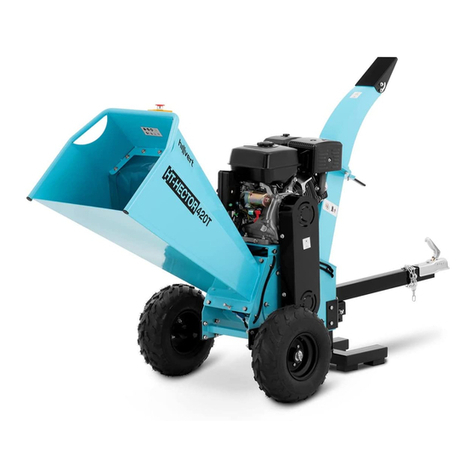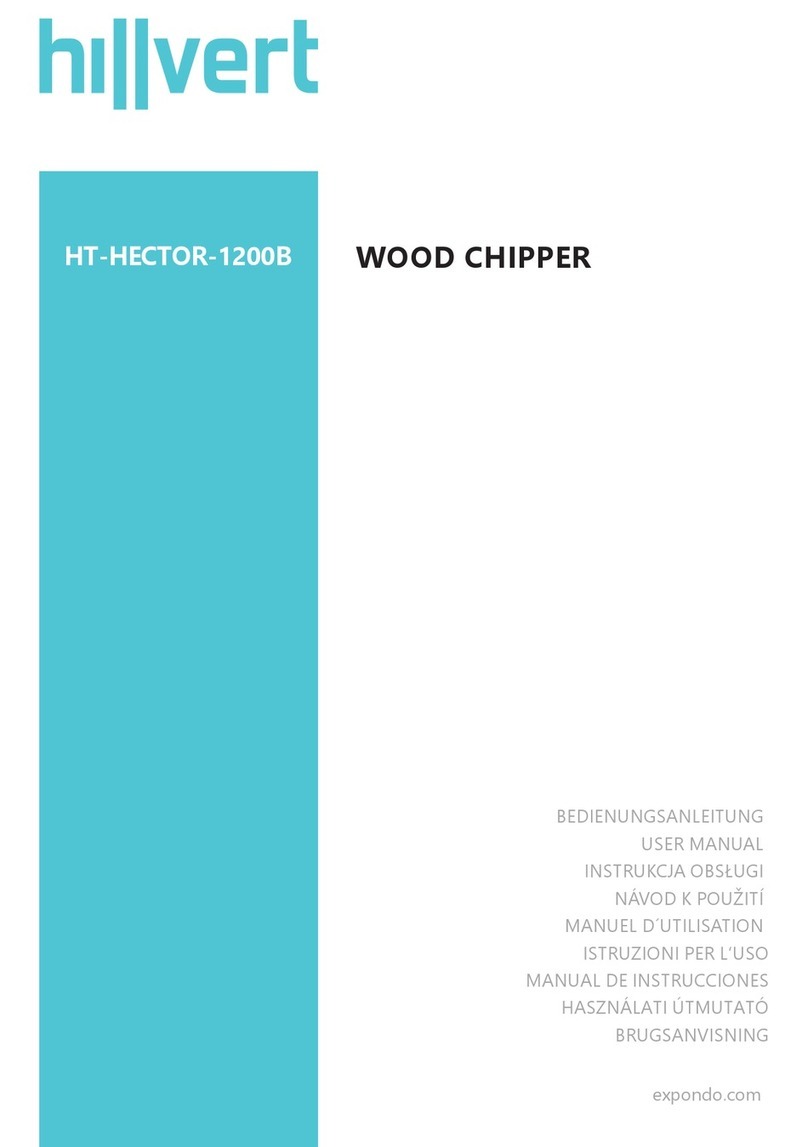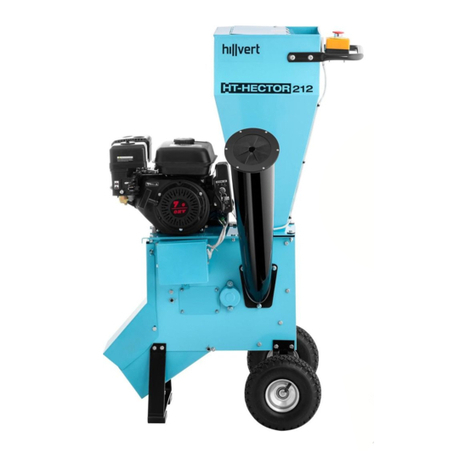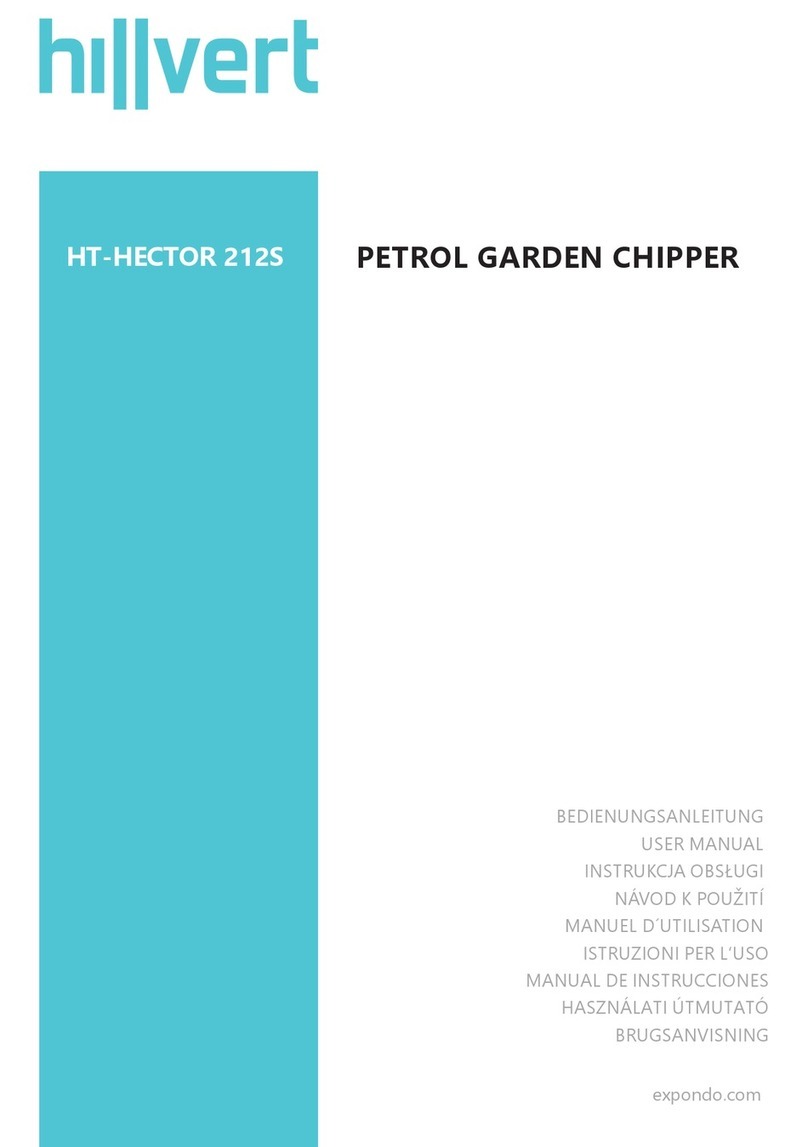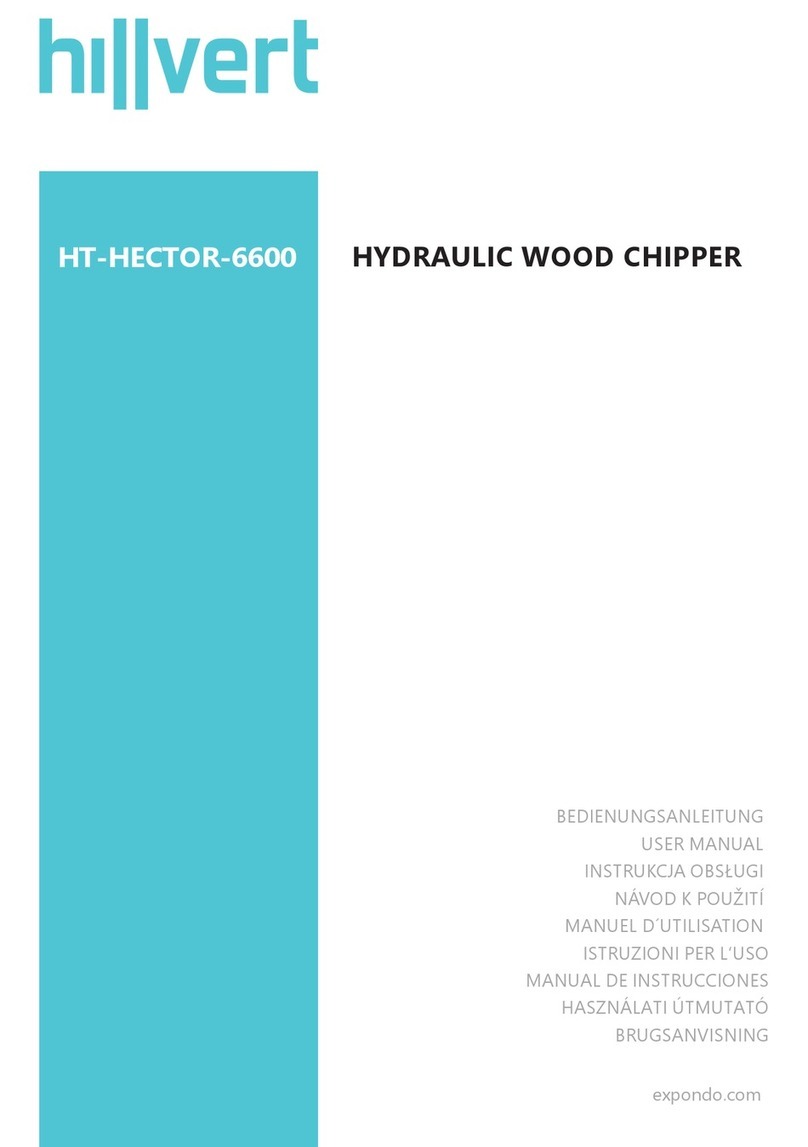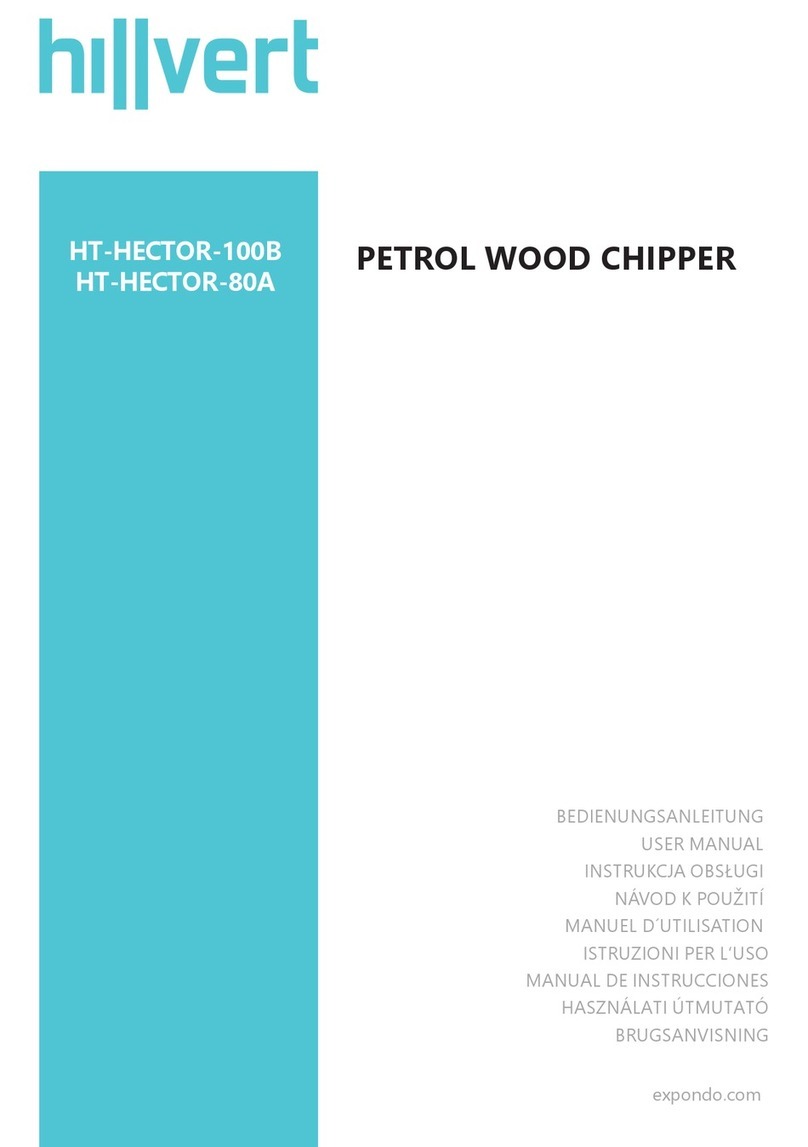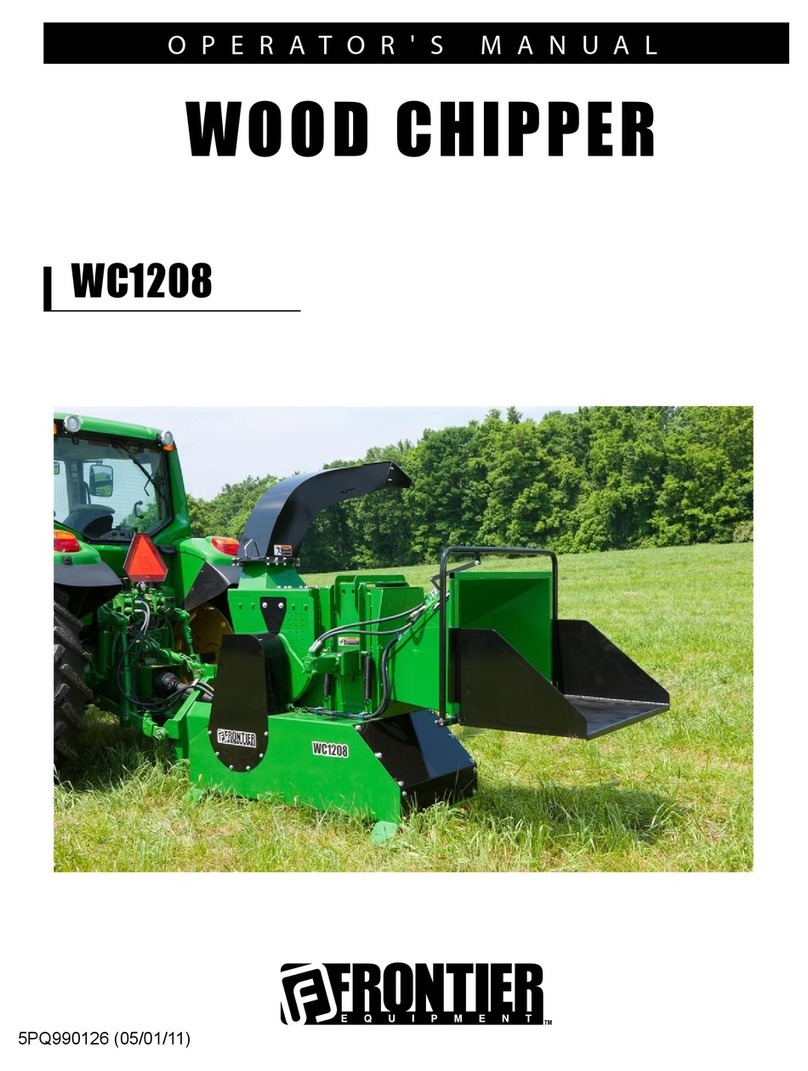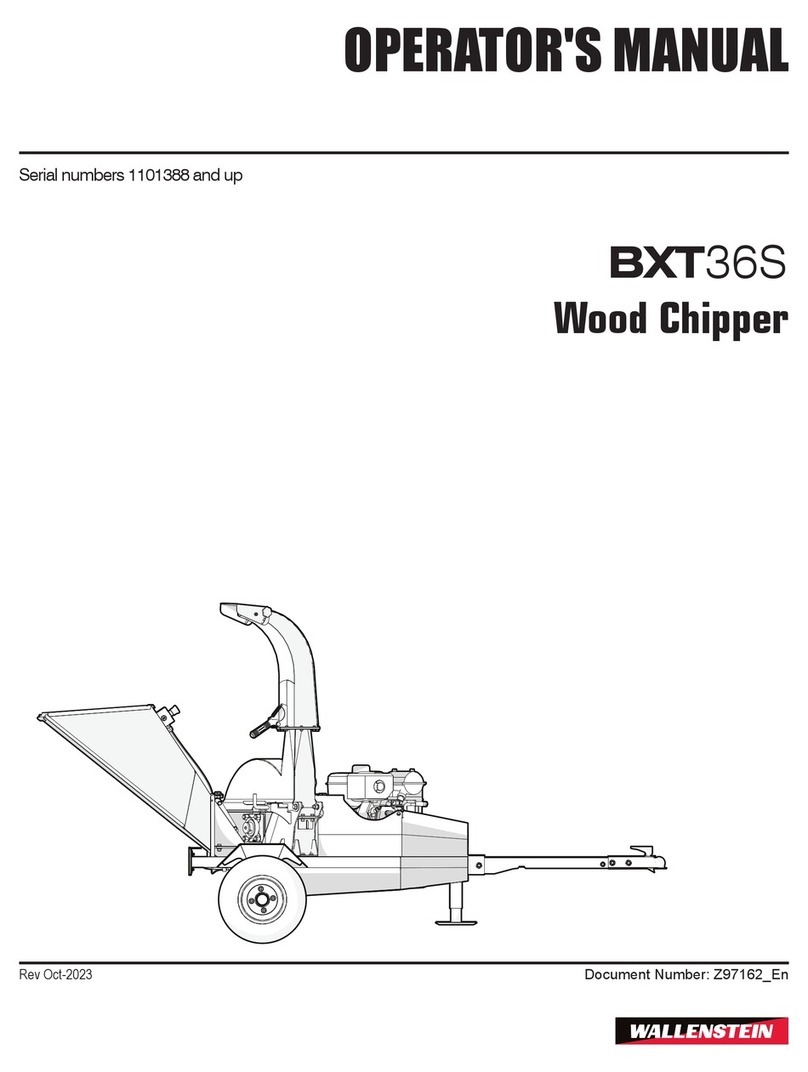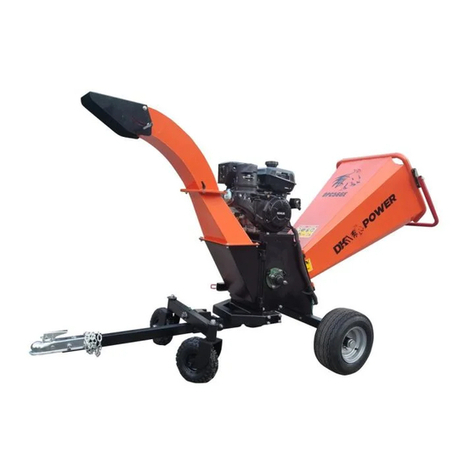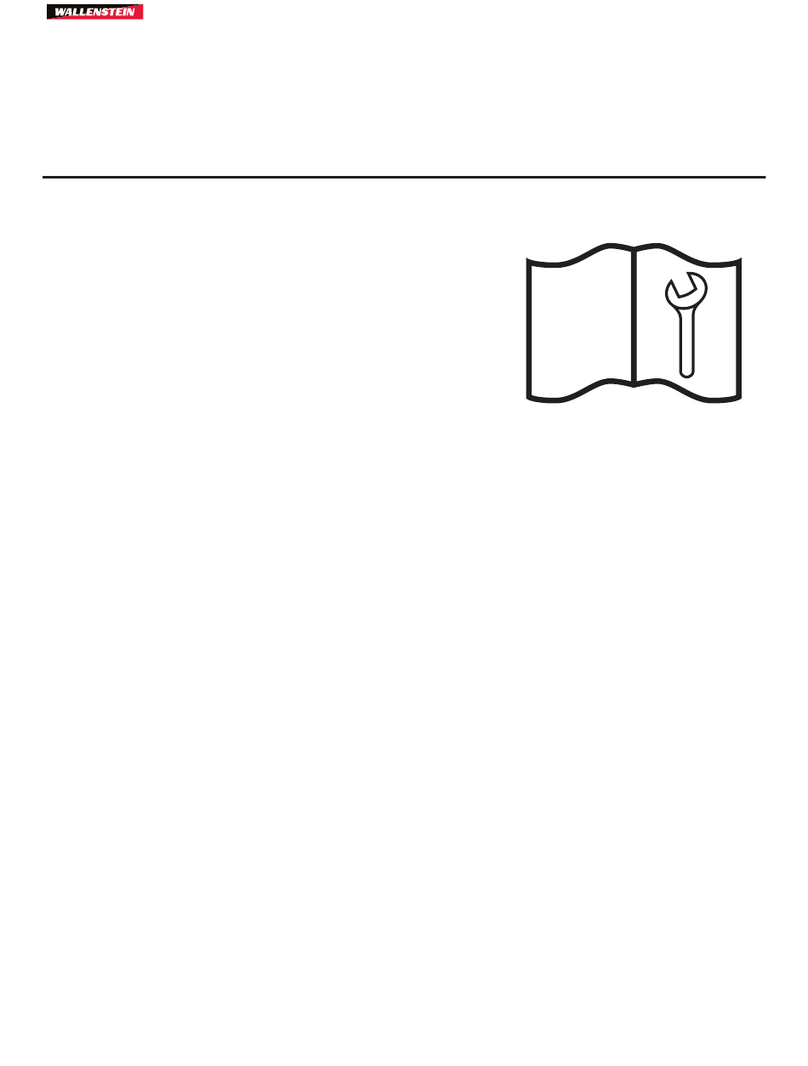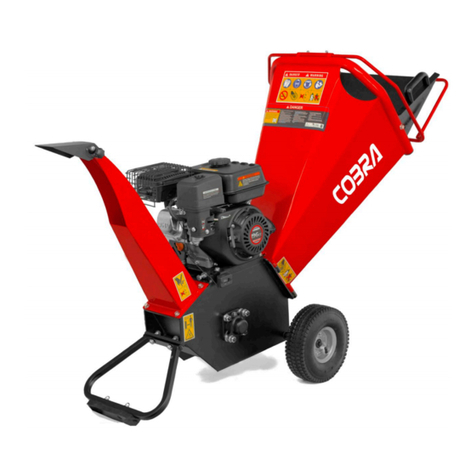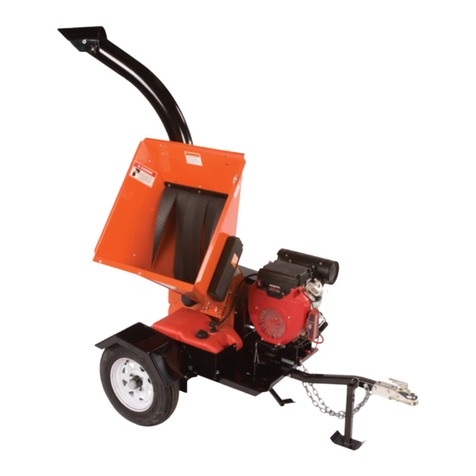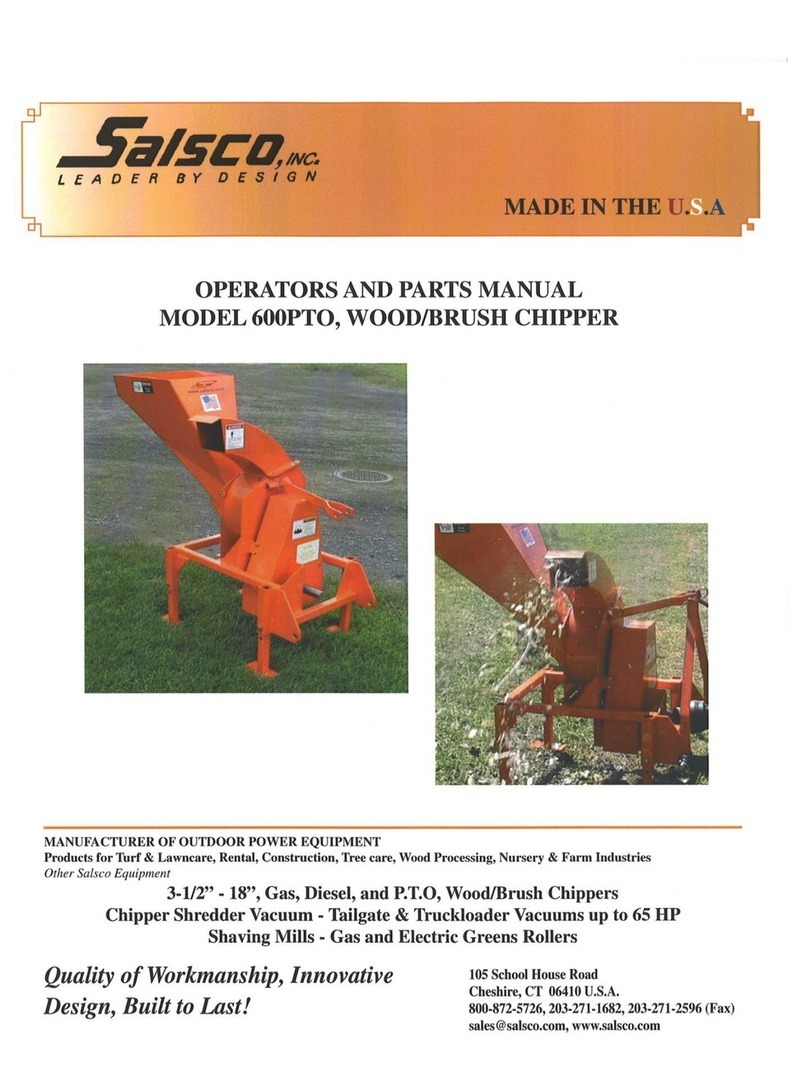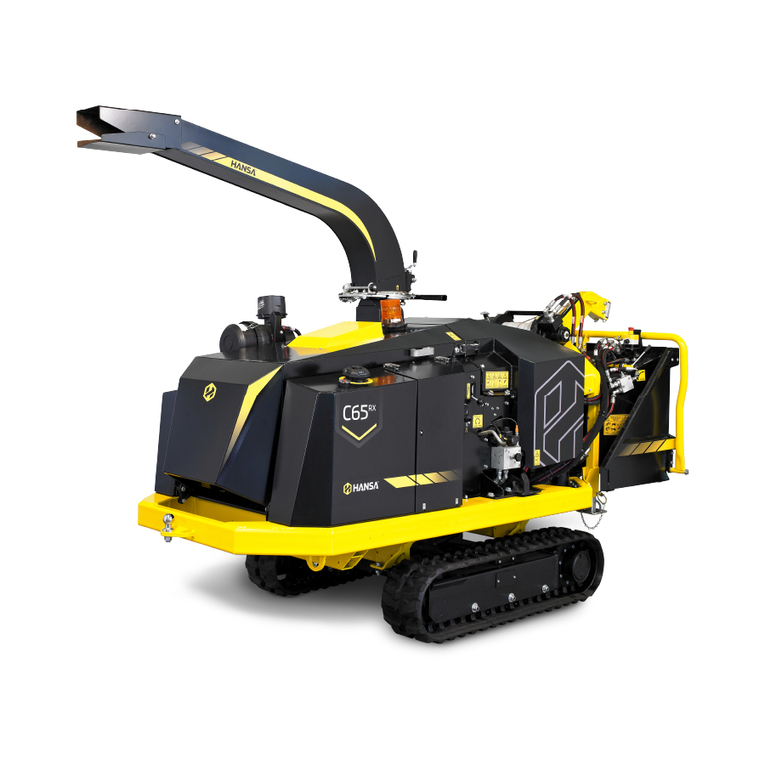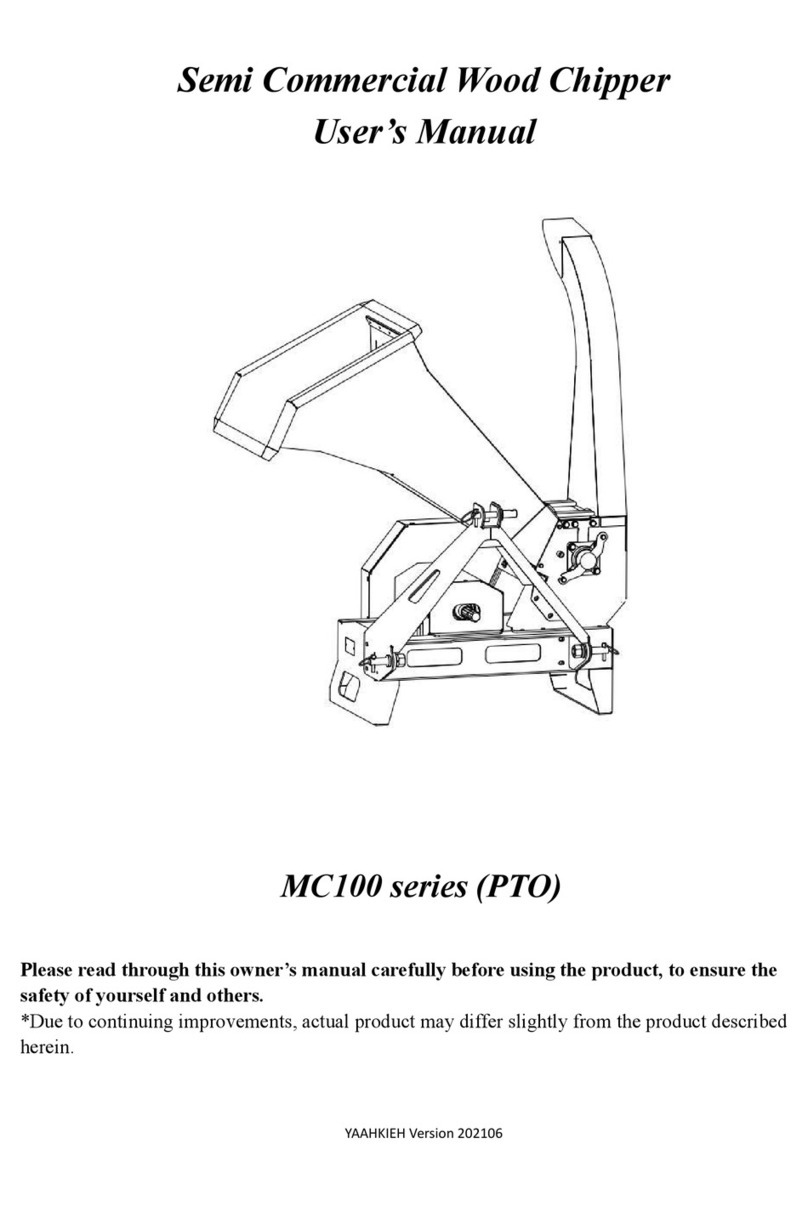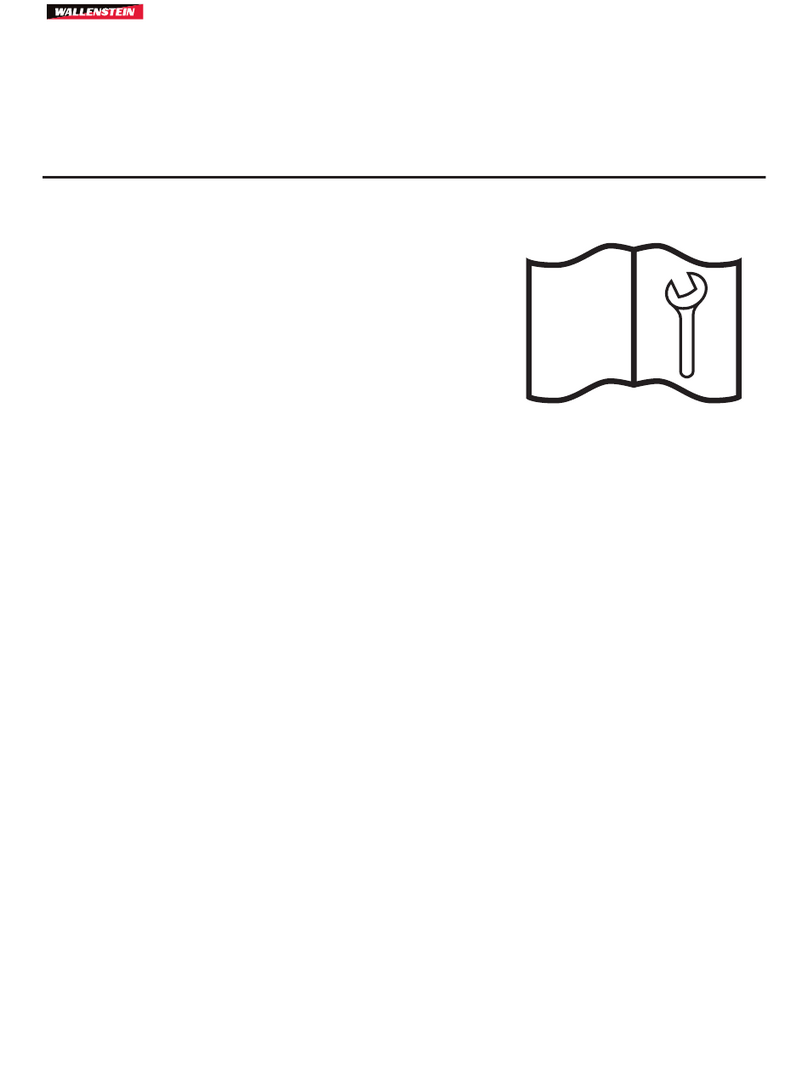
PL
19
28.06.2021
się). Urządzenia, które nie mogą być kontrolowane
za pomocą przełącznika są niebezpieczne, nie mogą
pracować i muszą zostać naprawione.
c) Nieużywane urządzenia należy przechowywać
w miejscu niedostępnym dla dzieci oraz osób
nieznających urządzenia lub tej instrukcji
obsługi. Urządzenia są niebezpieczne w rękach
niedoświadczonych użytkowników.
d) Utrzymywać urządzenie w dobrym stanie
technicznym. Sprawdzać przed każdą pracą czy
nie posiada uszkodzeń ogólnych lub związanych
z elementami ruchomymi (pęknięcia części i
elementów lub wszelkie inne warunki, które mogą
mieć wpływ na bezpieczne działanie urządzenia).
W przypadku uszkodzenia, oddać urządzenie do
naprawy przed użyciem.
e) Urządzenie należy chronić przed dziećmi.
f) Naprawa oraz konserwacja urządzeń powinna być
wykonywana przez wykwalikowane osoby przy
użyciu wyłącznie oryginalnych części zamiennych.
Zapewni to bezpieczeństwo użytkowania.
g) Aby zapewnić zaprojektowaną integralność
operacyjną urządzenia, nie należy usuwać
zainstalowanych fabrycznie osłon lub odkręcać śrub.
h) Przy transportowaniu i przenoszeniu urządzenia z
miejsca magazynowania do miejsca użytkowania
należy uwzględnić zasady bezpieczeństwa i higieny
pracy przy ręcznych pracach transportowych
obowiązujących w kraju, w którym urządzenia są
użytkowane.
i) Należy unikać sytuacji, gdy urządzenie podczas
pracy, zatrzymuje się pod wpływem dużego
obciążenia. Może spowodować to przegrzanie
się elementów napędowych i w konsekwencji
uszkodzenie urządzenia.
j) Nie wolno dotykać części lub akcesoriów ruchomych,
chyba że urządzenie zostało odłączone od zasilania.
k) Zabrania się przesuwania, przestawiania i obracania
urządzenia będącego w trakcie pracy.
l) Należy regularnie czyścić urządzenie, aby nie
dopuścić do trwałego osadzenia się zanieczyszczeń.
m) Nie wolno zasłaniać wlotu i wylotu powietrza.
n) Urządzenie nie jest zabawką. Czyszczenie i
konserwacja nie mogą być wykonywane przez dzieci
bez nadzoru osoby dorosłej.
o) Zabrania się ingerowania w konstrukcję urządzenia
celem zmiany jego parametrów lub budowy.
p) Trzymać urządzenia z dala od źródeł ognia i ciepła.
q) Nie należy przeciążać urządzenia.
r) Nie należy instalować, usuwać, regulować ani
serwisować elementów rynny wyładowczej ani
żadnych innych części podczas pracy silnika.
s) Podczas pracy silnika należy trzymać wszystkie części
ciała i ciężkie przedmioty z dala od leja załadowczego
i rynny wylotowej.
t) Nie wkładać kończyn do leja załadowczego oraz
do wylotu wiór podczas pracy maszyny. Grozi to
wciągnięciem i/lub obcięciem kończyn.
u) Nie należy podawać do urządzenia metalu, skał,
butelek, puszek i żadnych innych przedmiotów
innych niż botaniczne.
v) Obracające się ostrza tnące wewnątrz tych otworów
mogą spowodować poważne obrażenia ciała w
przypadku kontaktu.
w) Należy zachować uwagę, podczas pracy. Maszyna
może wyrzucać kawałki obrabianego materiału z leja
załadowczego lub rynny wylotowej.
x) W trakcie pracy silnik ulega mocnemu nagrzaniu. Nie
dotykać rozgrzanego silnika - grozi to poparzeniem.
y) Aby uniknąć ryzyka pożaru, utrzymuj liście, trawę
i inne palne materiały z dala od gorącego silnika i
tłumika.
z) Nie należy pracować na chodnikach, żwirze lub
innych twardych powierzchniach, ponieważ
przedmioty mogą rykoszetować i spowodować
obrażenia.
aa) Niektóre gatunki drzew mogą wywoływać reakcję
alergiczną. Pyły wydobywające się podczas obróbki
mogą być szkodliwe, należy stosować odpowiednie
środki ochronny.
bb) Nie należy pracować na nierównym terenie lub w
przypadku niestabilności urządzenia.
cc) Uwaga! Przetwarzany materiał może odbić się od leja
załadowczego lub być wyrzucony z rynny wylotowej.
dd) Jeśli rozdrabniacz zostanie zatkany lub zablokuje się,
natychmiast wyłączyć silnik i poczekać, aż wszystkie
ruchome części zatrzymają się całkowicie przed
czyszczeniem.
ee) Nie wolno wkładać do urządzenia gałęzi o średnicy
większej niż podana w danych technicznych.
) Należy upewnić się, że lej załadowczy jest pusty
przed uruchomieniem maszyny.
gg) Przed włączeniem urządzenia należy dodać olej do
odpowiedniego poziomu. Jeśli poziom oleju jest za
niski silnik nie uruchomi się lub może się wyłączyć
albo ulec uszkodzeniu.
hh) Wyciek olejów eksploatacyjnych z urządzenia należy
zgłosić odpowiednim służbom lub stosować się do
wymogów prawnych obowiązujących w obszarze
użytkowania.
ii) Niebezpieczeństwo! Zagrożenie dla zdrowia i ryzyko
wybuchu silnika spalinowego
jj) W spalinach silnika zawarty jest trujący tlenek węgla.
Przebywanie w środowisku zawierającym tlenek
węgla może prowadzić do utraty przytomności a
nawet do śmierci. Nie należy uruchamiać silnika w
pomieszczeniu zamkniętym.
kk) Chronić silnik od ciepła, iskier i płomienia. Nie palić w
pobliżu rębaka!
ll) Benzyna jest bardzo łatwopalna i wybuchowa. Przed
tankowaniem silnik powinien zostać wyłączony i
ostygnąć.
mm) Ostrzeżenie! Ryzyko uszkodzenia silnika przez
niewłaściwe paliwo.
nn) Akumulator urządzenia znajduje się pod napięciem.
Nie wolno dotykać zacisków i złączy akumulatora.
Odłączanie złączy od akumulatora należy
przeprowadzać w odpowiedniej kolejności.
oo) Nie używać urządzenia do rozdrabniania gruzu
budowlanego, plastiku, wyrobów papierniczych, lin
czy sznurków lub jakiegokolwiek materiału, który
może zawierać metal. UWAGA: Usunąć wszystkie
gwoździe, liny, sznurki lub kamienie, które mogą być
osadzone w częściach roślin (np. w korzeniach itp.)
przed wprowadzeniem materiału do urządzenia.
pp) Jeśli maszyna zacznie wydawać nietypowe dźwięki
lub wibrować, należy wyłącz silnik, odłączyć
przewód świecy zapłonowej i trzymać go z dala od
świecy zapłonowej, aby zapobiec przypadkowemu
uruchomieniu. Następnie należy odczekać 5 minut,
aż silnik ostygnie i sprawdzić, czy nie ma uszkodzeń .
PL
18 28.06.2021
UWAGA! Ilustracje w niniejszej instrukcji
obsługi mają charakter poglądowy i w niektórych
szczegółach mogą różnić się od rzeczywistego
wyglądu produktu.
Instrukcją oryginalną jest niemiecka wersja instrukcji.
Pozostałe wersje językowe są tłumaczeniami z języka
niemieckiego.
2. BEZPIECZEŃSTWO UŻYTKOWANIA
UWAGA! Przeczytać wszystkie ostrzeżenia
dotyczące bezpieczeństwa oraz wszystkie instrukcje.
Niezastosowanie się do ostrzeżeń i instrukcji może
spowodować ciężkie obrażenia ciała lub śmierć.
Termin „urządzenie” lub „produkt” w ostrzeżeniach i w
opisie instrukcji odnosi się do Rębaka rozdrabniacza gałęzi.
Nie wolno dopuszczać do zamoczenia urządzenia. Ryzyko
porażenia prądem! Nie wkładać rąk, przedmiotów do
wnętrza pracującego urządzenia! Nie wolno zasłaniać
otworów wentylacyjnych urządzenia!
2.1. BEZPIECZEŃSTWO W MIEJSCU PRACY
a) Utrzymywać porządek w miejscu pracy i dobre
oświetlenie. Nieporządek lub złe oświetlenie może
prowadzić do wypadków. Należy być przewidującym,
obserwować co się robi i zachowywać rozsądek
podczas używania urządzenia.
b) Nie używać urządzenia w stree zagrożenia
wybuchem, na przykład w obecności łatwopalnych
cieczy, gazów lub pyłów. Urządzenie wytwarzają
iskry, mogące zapalić pył lub opary.
c) W razie stwierdzenia uszkodzenia lub
nieprawidłowości w pracy urządzenia należy je
bezzwłocznie wyłączyć i zgłosić to do osoby
uprawnionej.
d) f)d) W razie wątpliwości czy urządzenia działa
poprawnie, należy skontaktować się z serwisem
producenta.
e) Naprawy urządzenia może wykonać wyłącznie
serwis producenta. Nie wolno dokonywać napraw
samodzielnie!
f) W przypadku zaprószenia ognia lub pożaru, do
gaszenia urządzenia pod napięciem należy używać
wyłącznie gaśnic proszkowych lub śniegowych
(CO2).
g) Na stanowisku pracy nie mogą przebywać dzieci
ani osoby nieupoważnione. (Nieuwaga może
spowodować utratę kontroli nad urządzeniem.)
h) Podczas pracy urządzeniem wytwarza się pył oraz
odłamki, zabezpieczyć osoby postronne przed ich
szkodliwym działaniem.
i) W przypadku zagrożenia życia lub zdrowia, wypadku
lub awarii zatrzymać urządzenie przyciskiem
WYŁĄCZNIK AWARYJNY!
j) Należy regularnie sprawdzać stan naklejek z
informacjami dotyczącymi bezpieczeństwa. W
przypadku gdy, naklejki są nieczytelne należy je
wymienić.
k) Zachować instrukcję użytkowania w celu jej
późniejszego użycia. W razie, gdyby urządzenie miało
zostać przekazane osobom trzecim, to wraz z nim
należy przekazać również instrukcję użytkowania.
l) Elementy opakowania oraz drobne elementy
montażowe należy przechowywać w miejscu
niedostępnym dla dzieci.
m) Urządzenie trzymać z dala od dzieci i zwierząt.
PAMIĘTAĆ! należy chronić dzieci i inne osoby
postronne podczas pracy urządzeniem.
2.2. BEZPIECZEŃSTWO OSOBISTE
a) Niedozwolone jest obsługiwanie urządzenia w
stanie zmęczenia, choroby, pod wpływem alkoholu,
narkotyków lub leków, które ograniczają w istotnym
stopniu zdolności obsługi urządzenia.
b) Maszynę mogą obsługiwać osoby sprawne zycznie,
zdolne do jej obsługi i odpowiednio wyszkolone,
które zapoznały się z niniejszą instrukcją oraz zostały
przeszkolone w zakresie bezpieczeństwa i higieny
pracy.
c) Maszyna nie jest przeznaczona do tego, by
była użytkowana przez osoby (w tym dzieci)
o ograniczonych funkcjach psychicznych,
sensorycznych i umysłowych lub nieposiadające
odpowiedniego doświadczenia i/lub wiedzy, chyba
że są one nadzorowane przez osobę odpowiedzialną
za ich bezpieczeństwo lub otrzymały od niej
wskazówki dotyczące tego, jak należy obsługiwać
maszynę.
d) Należy być uważnym, kierować się zdrowym
rozsądkiem podczas pracy urządzeniem. Chwila
nieuwagi podczas pracy, może doprowadzić do
poważnych obrażeń ciała.
e) Należy używać środków ochrony osobistej
wymaganych przy pracy urządzeniem
wyszczególnionych w punkcie 1 objaśnienia symboli.
Stosowanie odpowiednich, atestowanych środków
ochrony osobistej zmniejsza ryzyko doznania urazu.
f) Nie należy przeceniać swoich możliwości.
Utrzymywać balans i równowagę ciała przez cały
czas pracy. Umożliwia to lepszą kontrolę nad
urządzeniem w nieoczekiwanych sytuacjach.
g) Nie należy nosić luźnej odzieży ani biżuterii. Włosy,
odzież i rękawice utrzymywać z dala od części
ruchomych. Luźna odzież, biżuteria lub długie włosy
mogą zostać chwycone przez ruchome części.
h) Należy usunąć wszelkie narzędzia regulujące lub
klucze przed włączeniem urządzenia. Narzędzie
lub klucz pozostawiony w obracającej się części
urządzenia może spowodować obrażenia ciała.
i) Urządzenie nie jest zabawką. Dzieci powinny być
pilnowane, aby nie bawiły się urządzeniem.
2.3. BEZPIECZNE STOSOWANIE URZĄDZENIA
a) Nie należy przeciążać urządzenia. Używać narzędzi
odpowiednich do danego zastosowania. Prawidłowo
dobrane urządzenie wykona lepiej i bezpieczniej
pracę dla którego zostało zaprojektowane.
b) Nie należy używać urządzenia, jeśli przełącznik ON/
OFF nie działa sprawnie (nie załącza i nie wyłącza
Trzymać ręce lub jakąkolwiek część ciała z dala
od leja, lejka i rynny wylotowej, gdy maszyna
jest w użyciu.
Zawsze należy trzymać się z dala od strefy
wyrzutowej w trakcie pracy maszyny.
Zakaz palenia w pobliżu urządzenia. Urządzenie
zawiera łatwopalne substancje.
